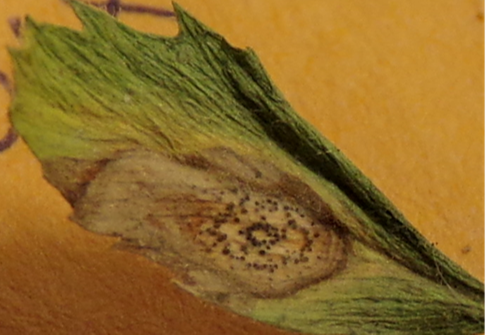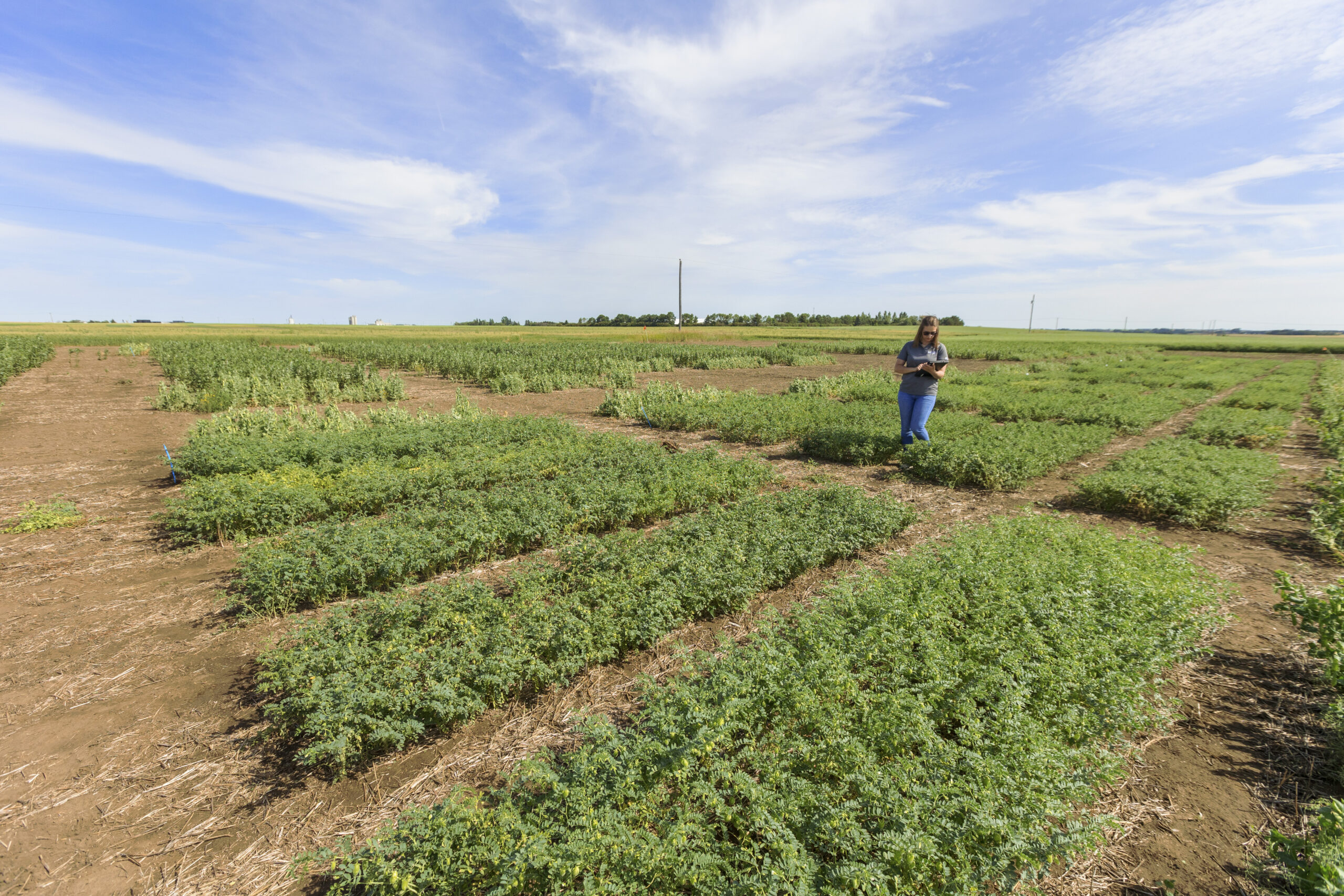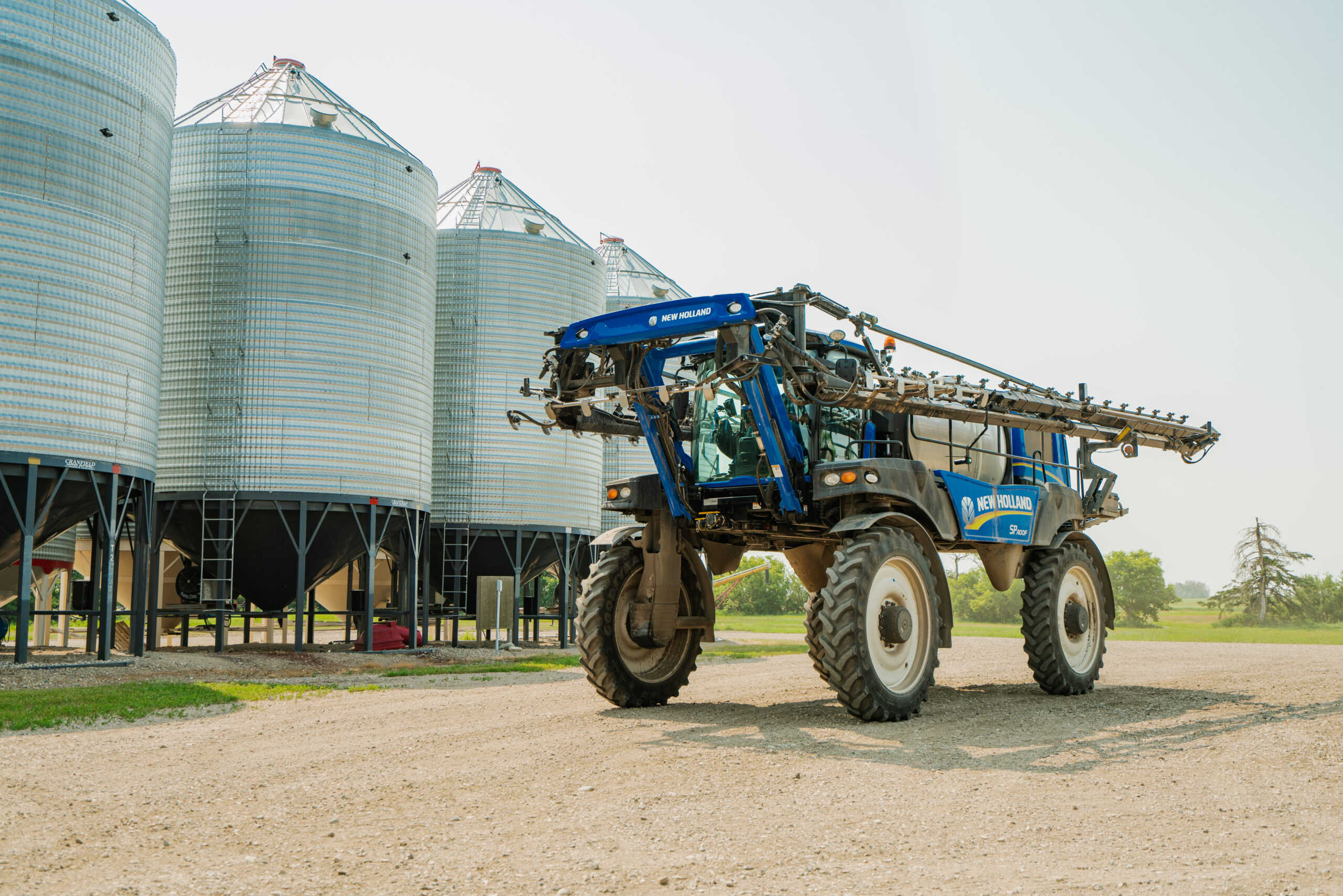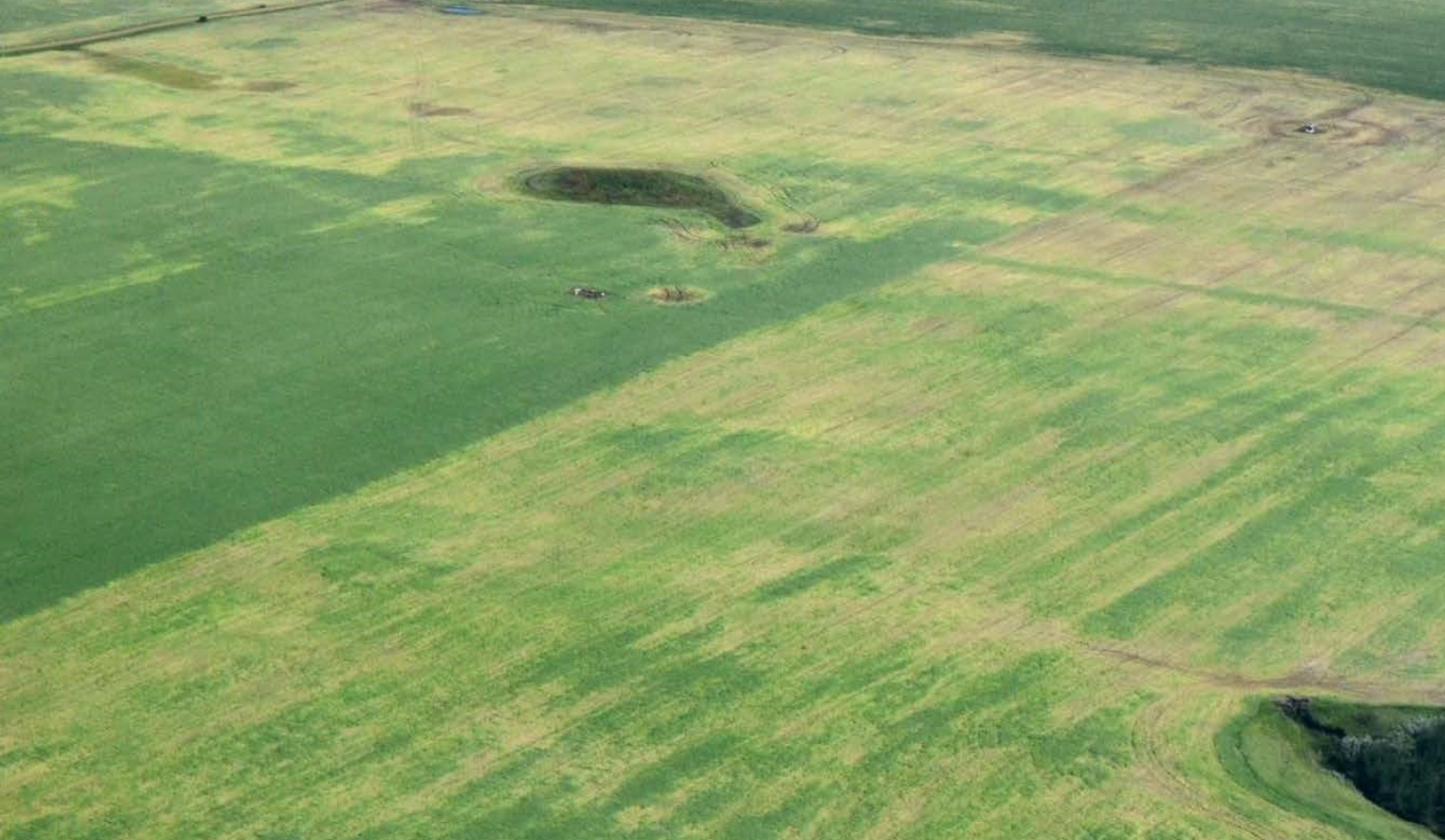Pest surveys are important for identifying new pests and monitoring existing ones to allow growers and agronomists to make informed decisions. Surveys are also used to provide samples for current research projects. In 2018 there were six formal surveys as outlined below including disease levels on seed, Phytophthora stem rot, Ascochyta blight in chickpeas, foliar diseases in faba beans, lentil foliar diseases, and root rots in peas and lentils.
Disease Levels on Seed
Disease levels on seed from four seed test labs are documented on an annual basis to help identify seed quality concerns for planting the following year, as well as to identify trends or concerns with seed quality over the long term. The reports are published in Canadian Plant Disease Survey Journal and available to use as reference material when looking to source seed. In years with higher disease pressure, the results can be used to identify areas in the province where higher seed quality may be found.
Initial results from 2018 harvested seed will be available in January.
Seed quality varies by year due to environmental conditions at the time of harvest and disease pressure during the growing season. Samples from the 2017 growing season had a high level of disease-free samples compared to the previous four years where higher disease levels were found on seed.
Thank you to the labs that participated in this survey: 20/20 Seed Labs Inc., Prairie Diagnostic Seed Lab, Discovery Seed Labs Ltd., and Lendon Seed Lab.
Phytophthora Stem Rot
With Phytophthora stem rot in soybeans there was one out of 15 suspect samples that were positive for Phytophthora root rot from 20 field samples submitted in 2018 to Dr. McLaren’s lab at Agriculture and Agri-Food Canada (AAFC) Brandon. Further race identification will occur over winter. From this survey we know that Phytophthora is present in Saskatchewan at low levels and is a disease growers should continue to watch for. In higher risk situations where more soybeans have been grown in rotations, growers can consider varieties with improved resistance to this disease and use seed treatments registered for control of Phytophthora.
Table. 1 Summary of Disease Levels on Pulse Seed Samples Tested from 2013 to 2017 in Saskatchewan
| Five-Year Provincial Summary | |||||||||||
|---|---|---|---|---|---|---|---|---|---|---|---|
| Crop | Pathogen | 2017 | 20161 | 20151 | 20141 | 20131 | |||||
| % PFS2 | Mean %3 | % PFS | Mean % | % PFS | Mean % | % PFS | Mean % | % PFS | Mean % | ||
| Lentil | A. lentis | 98.1 | 0.9 | 97.8 | 0.4 | 98.5 | 0.1 | 99 | 0.01 | 96 | nd4 |
| C. lentis | 95.1 | 0.7 | 60.4 | 0.8 | 72.4 | 1.0 | 78 | 0.2 | 88 | >0.1 | |
| Botrytis spp. | 90.3 | 1.1 | 14.8 | 3.3 | 54.8 | 1.8 | 45 | nd | 65 | nd | |
| S. sclerotiorum | 95.4 | 0.8 | 33.3 | 1.0 | 90.3 | 0.4 | 49 | 0.5 | 65 | nd | |
| Pea | Ascochyta spp. | 66.0 | 1.6 | 8.4 | 5.4 | 36.5 | 2.4 | 4 | 6.8 | 28 | 2.0 |
| Botrytis spp. | 93.3 | 0.6 | 61.1 | 0.9 | 74.8 | 1.6 | 84 | 0.1 | 73 | nd | |
| S. sclerotiorum | 98.5 | 0.4 | 78.3 | 0.7 | 90.6 | 0.3 | 85 | 0.1 | 95 | nd | |
| Chickpea | A. rabiei | 97.2 | 0.6 | 65.6 | 4.7 | 40 | 4.1 | nd | 0 – 2.8 | 60 | nd |
| Botrytis spp. | 100 | 0 | 37.0 | 8.4 | 42.4 | 3.77 | nd | 0.2 | 39 | nd | |
| S. sclerotiorum | 100 | 0 | 74.1 | 2.0 | 83.3 | 0.5 | nd | 0 – 1.3 | 75 | 0.5 | |
1 2016 (Olsen et al. 2019a); 2015 (Olson et al. 2019b); 2014 (Morrall and Carriere 2015); 2013 (Morrall et al. 2014).
2 % PFS = per cent pathogen-free
3 Mean % = mean per cent infection
4 nd = no data

Source: Dr. McLaren, AAFC Brandon
Faba Bean Foliar Disease Survey
All of the leaf samples submitted to Dr. Syama Chatterton, at AAFC Lethbridge, from faba bean fields in Saskatchewan and Alberta, had foliar disease symptoms in 2018 at mid- to-late podding stages. However, disease severity was very low across all fields, and was found to be most severe lower in the canopy, compared to the upper part of the plant. Three types of lesions were found in the faba bean samples:
- Flecked or small discrete reddish lesions that are characteristic of the non-aggressive phase of chocolate spot caused by Botrytis fabae
- Medium-size lesions that have a necrotic area in the middle where Stemphylium spp. were frequently isolated
- Large necrotic or blackened areas on the leaf surface
Alternaria spp. were isolated from almost all types of lesions, but commonly isolated from large necrotic lesions because it is often present with other fungi, particularly Botrytis or Stemphylium. It is suggested that Alternaria likely acts as a secondary pathogen or saprophyte on lesions caused by more pathogenic species. Fusarium spp. was isolated with less frequency as compared to previous years.
Table 2. Foliar Fungi Isolated from 2018 Faba Bean Survey
| Fungal Genera | % of Total Fungi |
|---|---|
| Alternaria spp. | 54.5 |
| Ascochyta spp. | – |
| Botrytis spp. | 7.8 |
| Cladosporium | 6.0 |
| Colletotrichum spp. | 0.1 |
| Epicoccum | 1.6 |
| Fusarium spp. | 2.6 |
| Other Saprophytes | 54.5 |
| Stemphylium spp. | 21.0 |
| Unidentified | 6.5 |
*Saskatchewan (16 fields) and Alberta (9 fields).
Source: Dr. Chatterton, AAFC Lethbridge
Results from this survey increases our knowledge on faba bean foliar diseases and helps agronomists and growers with better identification of pathogens involved to assist with management strategies. It also demonstrates the need for further research to evaluate the impact of the various pathogens or potential pathogens alone, and in combination, on yields of faba beans.

Left: Flecked or small, discrete reddish lesions.
Right: Medium-size lesions that have a necrotic area.
Source: Dr. Chatterton, AAFC Lethbridge

Source: Dr. Chatterton, AAFC Lethbridge
Chickpea Aschochyta Survey

Source: Michelle Hubbard, AAFC Swift Current
The level of fungicide resistance in Ascochyta rabiei of chickpea was evaluated in 2018 from a survey of Southern Saskatchewan. Chickpea samples (leaves, stems, pods, and/or seeds) showing Ascochyta infection were submitted to Dr. Hubbard with AAFC at Swift Current. Ascochyta rabiei was confirmed as present in the sample and then evaluated through PCR for strobilurin resistance. To date all six samples analyzed are confirmed resistant to strobilurin fungicides. These results indicate that in Saskatchewan there may be a high level of strobilurin resistance in chickpea Ascochyta, which means fungicide plans need to be re-evaluated to ensure alternative modes of action are being used. Results from the limited samples from 2018 it indicate that strobilurin fungicides may no longer provide effective control of Ascochyta in chickpeas. A larger survey is being planned for 2019, so please watch for opportunities to participate.
Lentil Foliar Diseases
Dr. Barb Ziesman with the Saskatchewan Ministry of Agriculture (SMA) presented results from the lentil disease survey in Saskatchewan at the Western Forum of Pest Management Meeting in October. A total of 70 lentil fields were evaluated from mid-July to mid-August for presence of foliar diseases and root rot symptoms. During the survey, approximately 44 per cent of the lentils were reported as good to very good in terms of crop health. Environmental stress, including moisture and heat stress, was noted in 24 and 20 per cent of the surveyed fields, respectively. Anthracnose was the most prevalent disease in 2018 across the province, particularly in southwest Saskatchewan. Drier conditions across the lentil growing regions resulted in low incidence of Botrytis, Sclerotinia, and Stemphylium.
Pea and Lentil Root Rots
Dr. Chatterton, AAFC Lethbridge submitted results on the pea root rot samples collected from Saskatchewan in 2018. All of the 25 pea fields had root rots present, and severity ranged from 1 to 6.6 on a scale of 1 to 7, with 7 being the worst. Visual symptoms were consistent primarily with Fusarium spp. and/or Aphanomyces euteiches. Further DNA analysis will be performed during the winter months to confirm pathogens present.
Lentils had a slightly lower incidence of root rot as SMA’s lentil survey identified root rot symptoms visually in just over half (57 per cent) of the 70 fields surveyed. The lower incidence could be related to the drier conditions in the lentil growing regions where the samples were obtained, compared to the pea growing areas of the province.

Published December 2018


